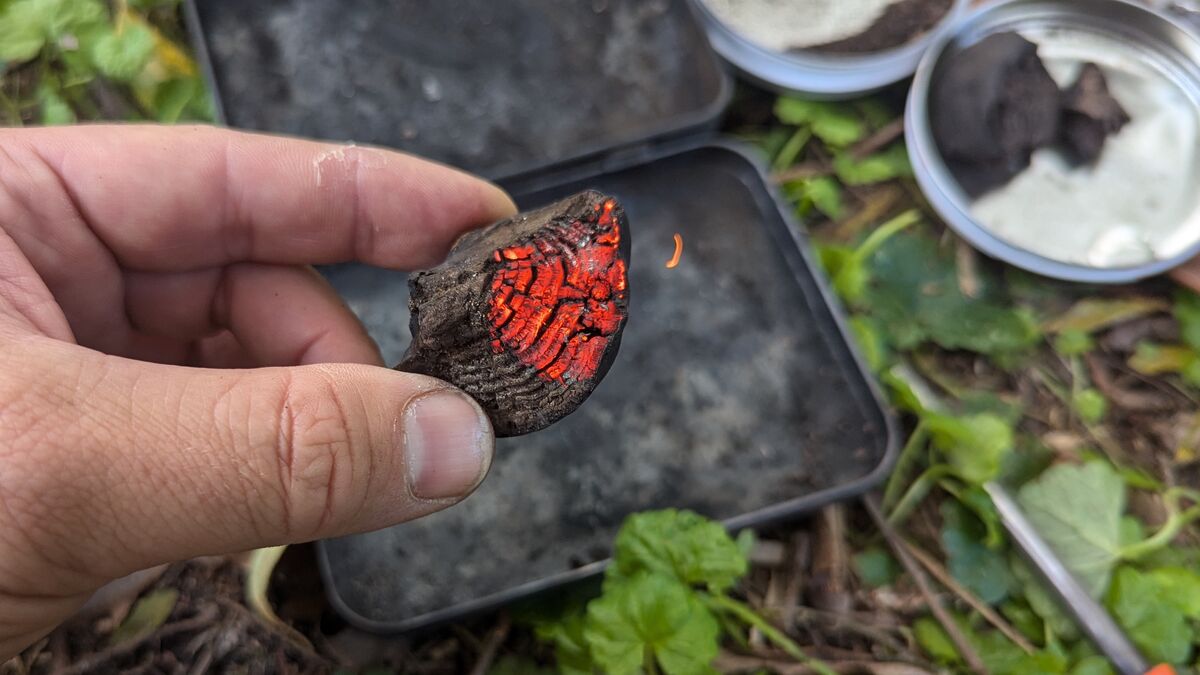
The coal fungus: your unexpected fire hero in the forest (King Alfred's cake, cramp balls)
👉 The key facts from this guide
- The coal fungus (Daldinia concentrica) is a useful natural fire starter.
- It prefers to grow on ash trees, particularly on dead or dying trees as well as fallen branches.
- For use, the fungus needs to be dried and processed, e.g., by breaking, cutting, and grinding.
- It works well with fire steel and striker and can carry embers for an extended period.
- The fungus plays an important role in the ecosystem by decomposing dead wood and creating habitat for microorganisms.
- When foraging, responsibility is necessary to maintain the natural regeneration and ecological balance of the forest.
Making fire with mushrooms? Sounds like a bad trip, doesn't it?
Well, I thought it was nonsense too. Until I was standing in the middle of the forest, soaking wet and on the verge of freezing.
Do you know what saved me? An inconspicuous black lump on a tree.
No joke. This mushroom literally saved my butt.
And now watch out: This little guy can not only make fire. He can even transport it. Like a match on steroids.
Doesn't that sound like a trick every nature lover should know?
I bet you're thinking now: "What kind of nonsense are you talking about?"
Fact is: This mushroom is the biggest insider tip since sliced bread. And now I'll show you how to find, collect, and use it.
So, are you ready to uncover the secret of the coal fungus?
The Coal Fungus: Nature's Fire Starter and Survival Helper
Okay, let's talk straight. This mushroom I'm talking about here is called Coal Fungus. Sounds interesting, doesn't it? In Latin, experts call it "Daldinia concentrica".
Other names are King Alfred's cake or cramp balls.
Why is it called "King Alfred's cake"?
There's a Legend: King Alfred - who lived in Britain in the 9th century - once hid on a country estate during the war against the Vikings and was tasked with removing the baked cakes from the oven. He fell asleep and the cakes burned. Daldinia concentrica is said to resemble a cake that was left to this fate.
Why is it called "Cramp balls"?
The coal mushroom is also known in English as a "cramp ball" because it was believed that wearing it would protect people from cramps.
Just imagine a black ball that looks like someone stuck a bunch of charcoal to a tree. Exactly! That's our little fire devil.
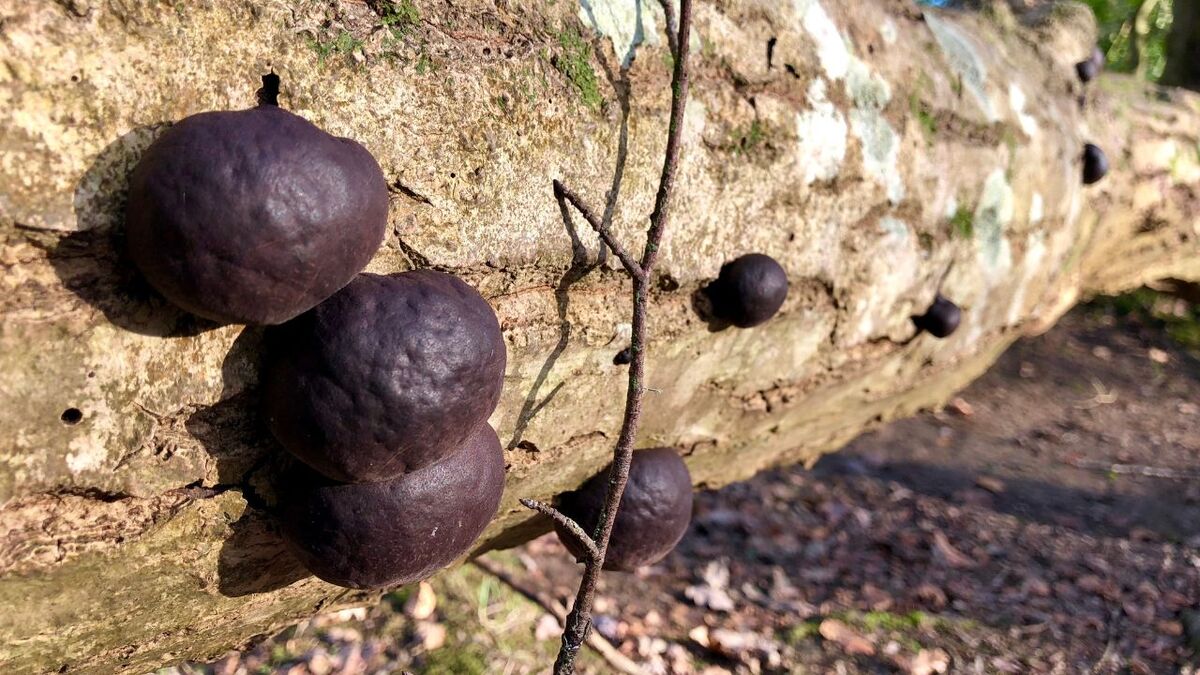
But now it comes: This inconspicuous fellow is a real ignition talent. He not only ignites fire, no. He keeps it alive. Like a phoenix from the ashes, only in mushroom form.
The coal fungus has been used as a portable fire starter for thousands of years.
And the best part? It also grows here in Germany. If you know where to look. But don't worry. I'll tell you right away how to become a mushroom expert.
So, are you ready to awaken your inner fire station? Then let's dive deeper into the world of this crazy little thing!
Where the Fire Mushroom Calls Home: Your Guide to Finding It
You're probably wondering: "Where the hell do I find this magical mushroom?".
Well, I have good news for you. The coal fungus is not a shy deer. It does not hide in the depths of the Amazon jungle.
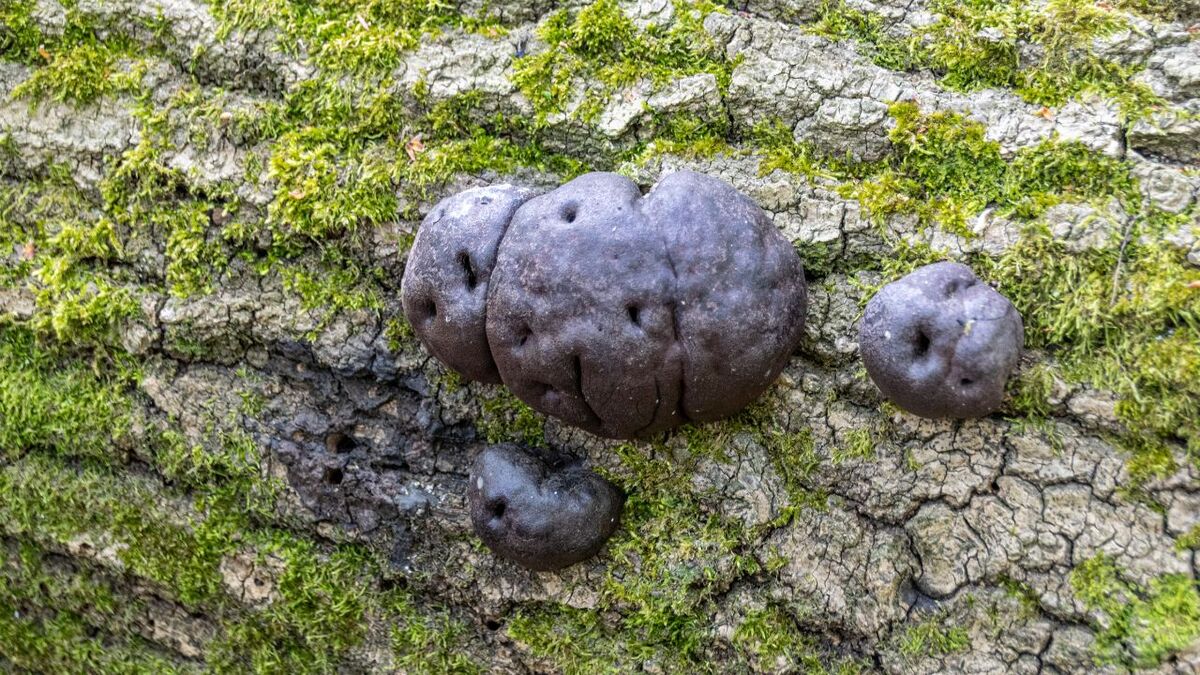
Here is your treasure map to the mushroom Eldorado:
- Look for ash trees: These mushrooms love ash trees. Less commonly found on alder, beech, birch, oak, and other deciduous trees. They like it moist.
- Keep an eye out for dead or dying trees: The more decayed, the better.
- Look down: You often find them on fallen branches.
But beware! Not every black lump on a tree is our fire fungus. Here's a little trick:
Coal fungus or not?
- Looks like a black ball? ✅
- Feels hard? ✅
- Has concentric rings inside (when you break it open)? ✅
If you have three ✅, then congratulations! You have found your first Coal fungus.
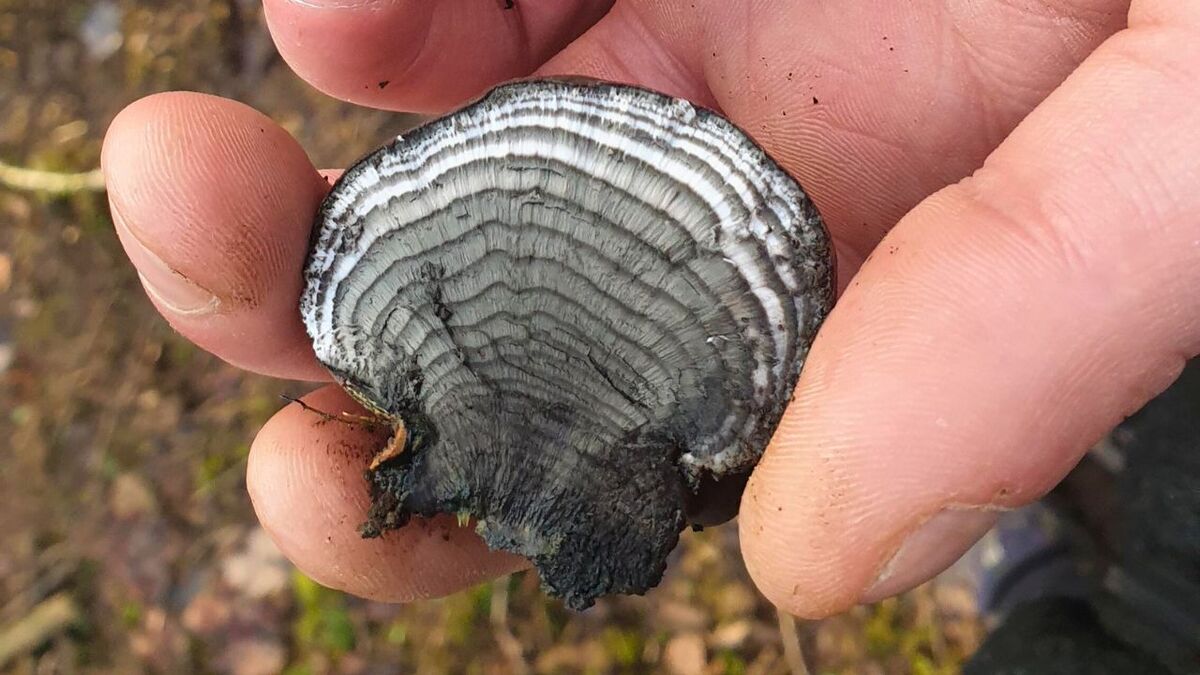
Here are all the facts at a glance:
| Property | Description |
|---|---|
| Aroma | Hardly noticeable |
| Taste profile | Unremarkable |
| Appearance | Diameter 3–9 cm, initially gray, reddish-brown to black-violet, later spherical with fine bumps, without a stem |
| Internal structure | Dark colored (purple-brown to black), firm, with characteristic silvery layers |
| Spore color | Dark brown, size: 12–16 x 5.5-8.5 µm |
| Habitat | Grows on dead deciduous wood, visible year-round, spore maturity in autumn |
| Taxonomy | Belongs to the coal berries and ball fungi |
| Similar species | Can be confused with various dark fungi species, e.g., Brandkrustenpilz or Birnenkohlenpilz |
| Special feature | Leaves a sooty layer in the surroundings due to spore release |
| Countries | Widespread in Central Europe, such as Germany, Great Britain, and Ireland. Found in most parts of continental Europe. Also in North America, Australia, and many other countries with temperate climates. |
Now that you know where to look, you are ready for your first mushroom safari. But remember: only take what you need. These little fire devils also have an important job to do in the forest.
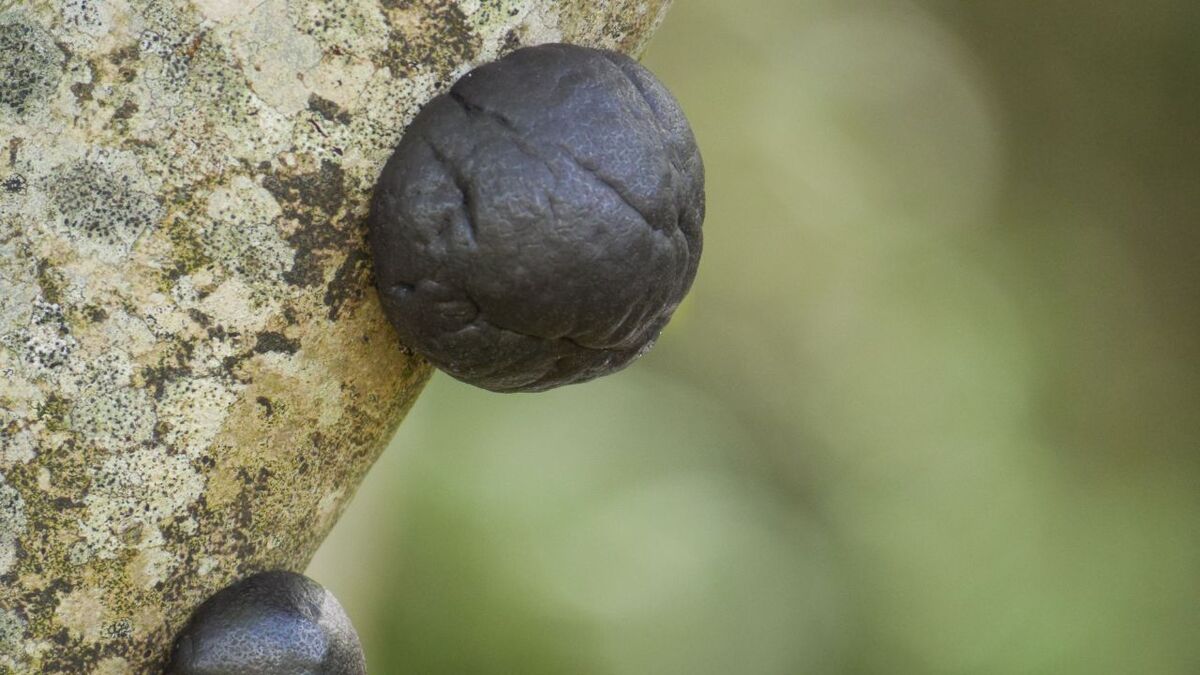
From Tree to Fire: How to Get the Coal fungus Ready
Have you found your first coal fungus? Great! But now comes the crucial part: How do you turn this inconspicuous black lump into your personal fire starter? Don't worry, I'll guide you step by step through the process.
-
Collect: Only take ripe, hard (and if possible, very dry) specimens. Soft or mushy mushrooms are as useful as a paper umbrella.
-
Dry: This is the key to success if the mushroom is moist
- Place the mushrooms in a dry, well-ventilated area
- Wait a few days (yes, patience is required here)
- Pro tip: Use your car's dashboard as a solar dryer
-
Prepare:
- Cut the mushroom in half.
- Look for the concentric rings inside - this is your quality feature!
"A well-dried coal fungus is the best friend of fire-making" - a wise old ranger (okay, that was me)
Attention: Even though the coal fungus is not poisonous, you should not eat it. Unless you enjoy the taste of charred rubber with a hint of forest floor.
Why Drying is So Important
- Moist mushrooms = smoke instead of fire
- Dry mushrooms burn longer and hotter
- Dried mushrooms are easier to ignite
Now that you know how to prepare these little fire wonders, you are ready for the most exciting part: Making the fire!
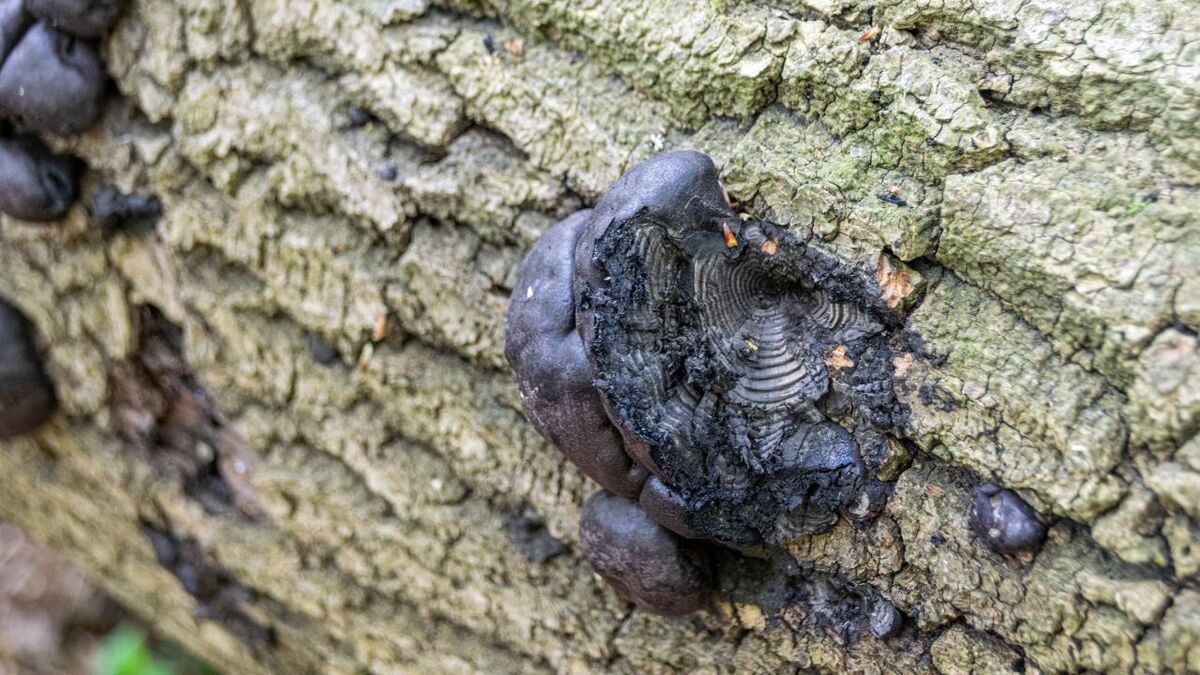
The Coal Fungus: A Fire Starter Since the Stone Age
You think the coal fungus is just a modern bushcraft trick? Far from it, my friend!
This little fire helper has a history that dates back to the Stone Age. Imagine: archaeologists found remains of our mushroom buddy during an excavation in Spain - and the find is 7,000 years old!
Our ancestors were apparently just as clever as we are. They collected the coal fungus along with other tinder fungi. Why? Well, to make fire, of course!
With a spark from pyrite and flints or by friction of wood, they could ignite the dry fungus. Et voilà - campfire à la Stone Age!
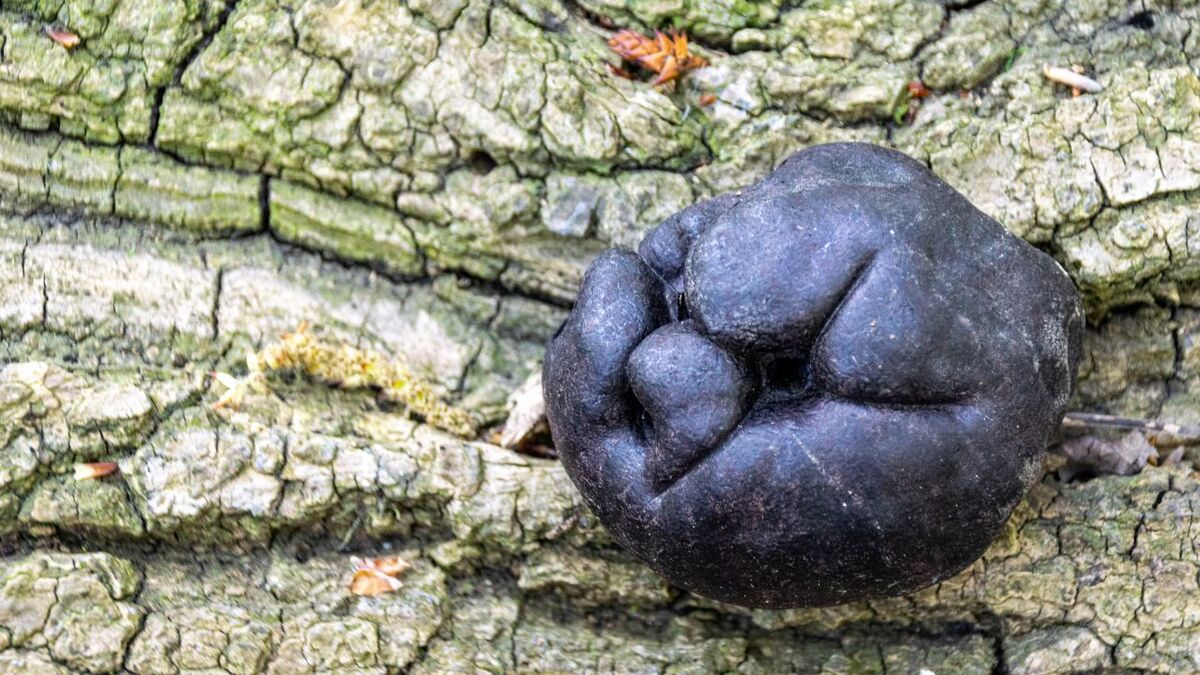
But it gets even better:
Experts suspect that our ancestors even used the glowing mushroom as a kind of "fire-to-go." Imagine packing a glowing piece and taking it with you on a hike. Brilliant, isn't it?
This ancient connection between humans, fire, and fungus also explains why the coal fungus bears this name.
Do you want to learn more about this fascinating discovery? Then check out the study here: Stone Age Fire Makers.
So, the next time you hold a coal fungus in your hands, remember: You are holding a piece of human history in your hand.
Fire Magic in the Forest: The coal fungus as Your Bushcraft Buddy
Now it gets exciting! Your dried coal fungus is more than just a pretty black lump. It is your ticket to the fire-making Olympics. Let's see how you use this little guy in the wild.
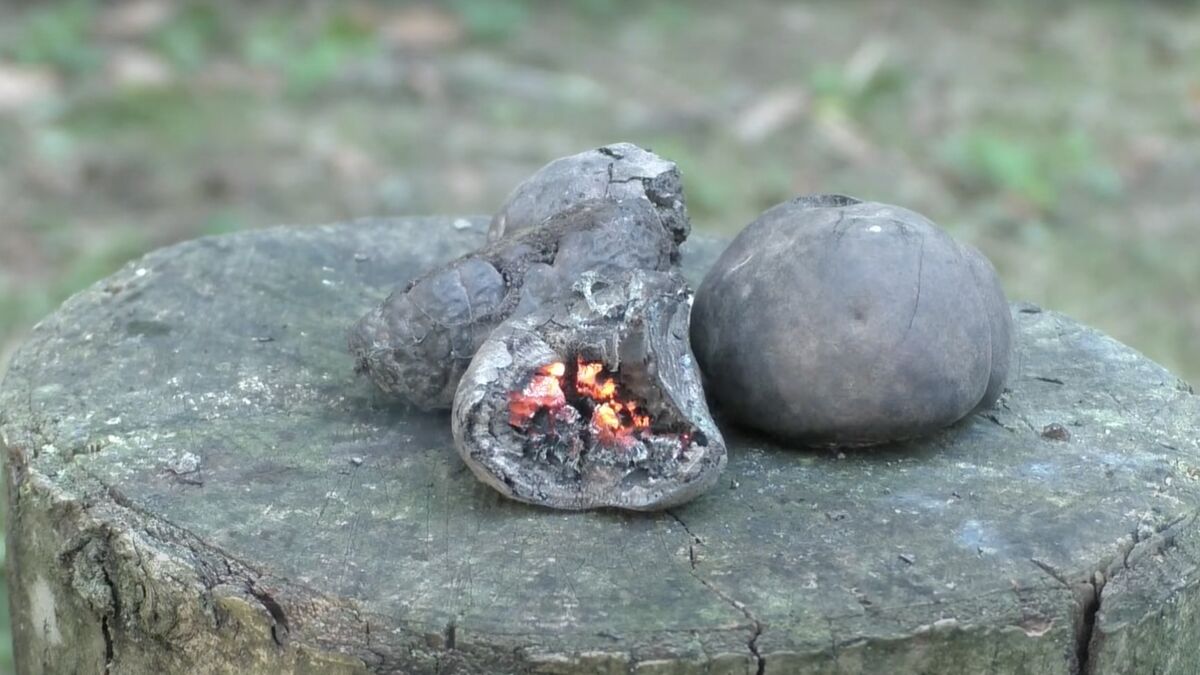
As tinder for fire steel and co.
-
Fire steel:
- Option 1: Grind a piece of mushroom into fine powder
- Option 2: Cut off a large slice
- Strike sparks on it and - voila - you have an ember!
-
Striker:
- Also works well with striker and flint
"With the coal fungus and a fire steel, you feel like a fire god!" - (Me, after my first successful attempt)
Read also
How to quickly and easily start a fire with a fire steel (Guide + Video) – With these 2 foolproof tricks, you can quickly and easily start a bushcraft fire with your fire steel. This way, you can easily ignite your tinder.
Transport embers like a pro
Ember Transport à la Stone Age
- Take a larger piece of coal fungus
- Ignite it at one spot
- Keep adding oxygen to maintain the ember
- Voilà! Your Stone Age "Zippo" is ready for use
The coal fungus burns slowly, similar to a charcoal briquette, with particularly little smoke.
Once it is lit, a constant supply of oxygen is usually required to keep it burning - for example, by swinging the mushroom or blowing on it.
The Coal Fungus and the Fire Drill - A Dream Team
- Create an ember with your bow drill
- Place a piece of coal fungus in front of your notch (where the ember falls out)
- Blow gently and marvel at how the ember grows and thrives
Pro tip: Crumble the mushroom and sprinkle it on your embers. This will increase the ember surface and extend the glowing duration.
Combo Power: Coal Fungus Meets Other Tinder Materials
- Mix crumbled mushroom with birchbark for an explosive start
- Use it as a base for your tinder nest made of dry grasses
Remember: The coal fungus is your ember guru. It gives you time to build your fire without going into panic.
Coal Fungus vs. The World: Pros and Cons in the Tinder Showdown
You're probably wondering now:
"Is this coal fungus really the Holy Grail of fire making?"
Well, as always in life, our little black friend also has its strengths and weaknesses. Let's take an honest look at it.
The advantages ✅
-
Durability:
- Glows partially - depending on size - for hours
- Perfect for patient fire-making
-
Reliability:
- Can be used immediately as tinder if very dry
- Works better than many alternatives even in moisture
-
Versatility:
- Usable with various fire-making methods
- Can be combined with other tinder materials
-
Availability:
- Found in many forests
- Free of charge
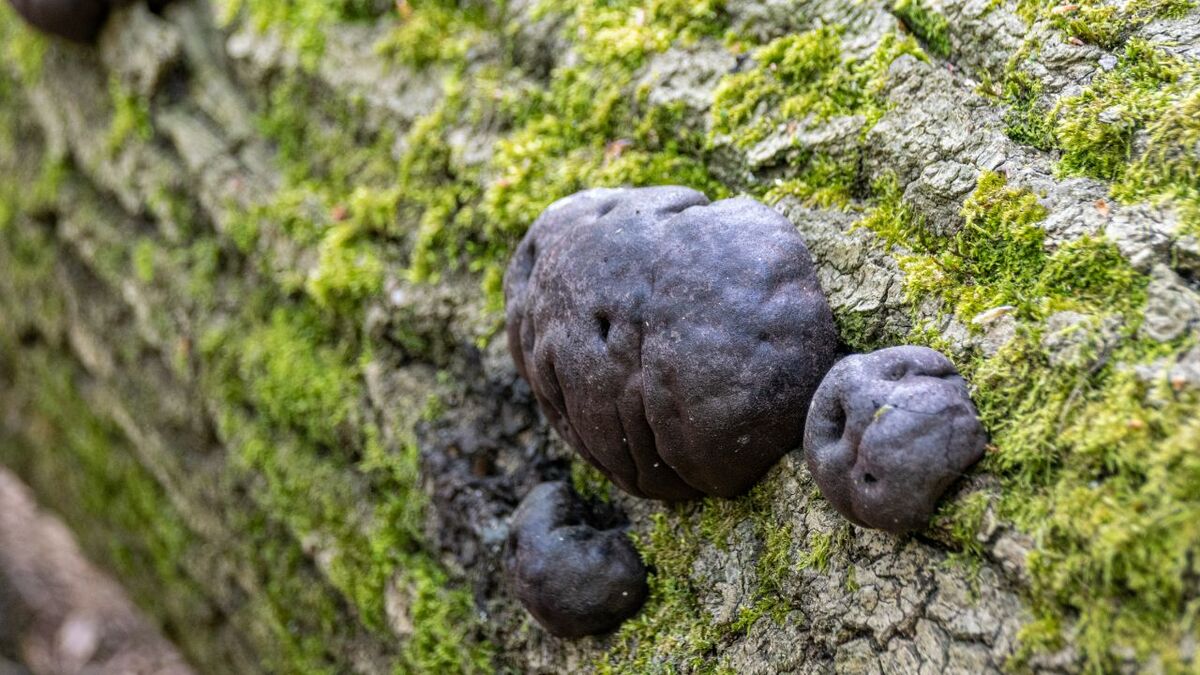
The Dark Sides ❌
-
Preparation time:
- Must be thoroughly dried if still wet
- Sometimes hard to find, as it is rare
-
Learning curve:
- Requires some practice to handle
- Not as intuitive as modern lighters
Alternatives to Coal Fungus
- Birch Bark: Easily ignitable, but burns quickly
- Fatwood: Burns like wildfire thanks to the resin
- Modern Fire Starters: Simple, but less satisfying
-
Limited Availability:
- Not found in all regions
- Seasonal fluctuations in availability
-
Ecological Concerns:
- Excessive collecting can disrupt local ecosystems
- Responsible collecting is a must!
"The coal fungus is like a loyal dog: It needs some care and training, but then it becomes your best friend in the wilderness." - My summary after years of use
Is it the right one for you? You have to find that out for yourself. But I can promise you: The first successful use will fill you with pride!
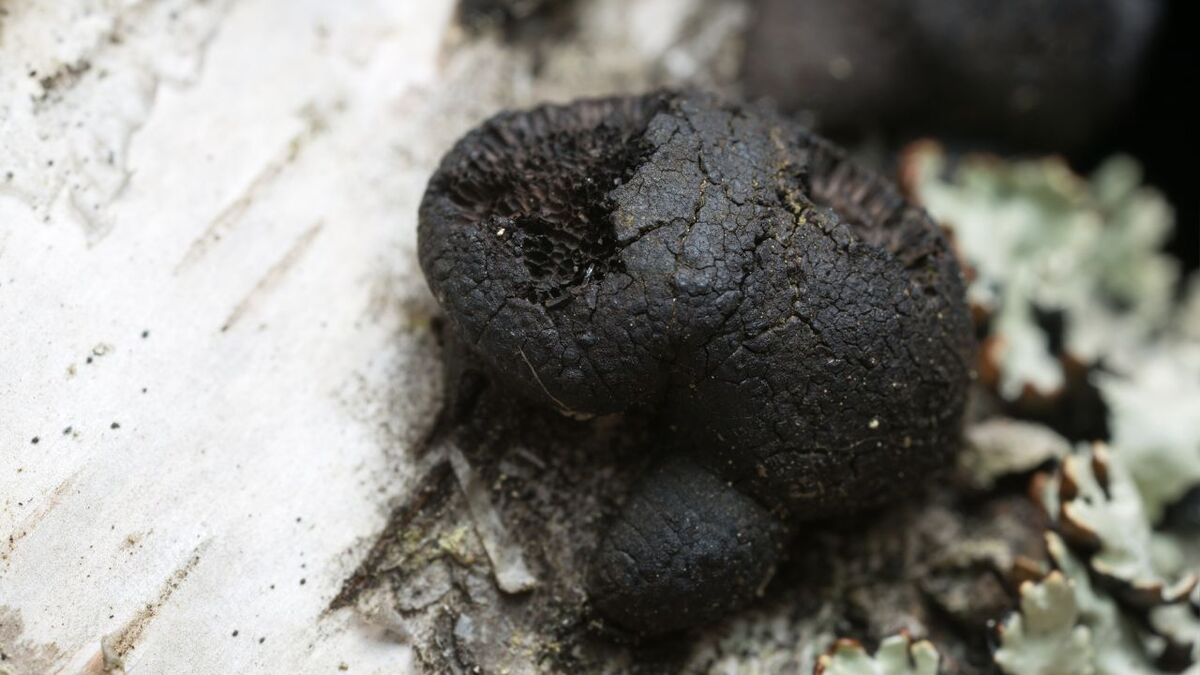
More than just fire starters: The ecological role of the coal fungus
Have you ever wondered why Mother Nature created this fantastic fire helper? Certainly, not to make life easier for Bushcrafters!
Let's take a look behind the scenes and discover the important ecological role of our little black friend.
The Secret Hero of the Forest
-
Wood Decomposer Deluxe:
- Breaks down dead wood
- Recycles nutrients back into the soil
-
Habitat Architect:
- Creates microhabitats for insects and small organisms
-
Ecosystem Stabilizer:
- Helps with natural forest regeneration
- Prevents the spread of harmful fungi
The Coal Fungus in the Ecosystem
- Part of the forest's natural recycling system
- Important player in the carbon cycle
- Indicator of the health of ash forests
Responsible Collecting: A Must!
- The golden rule: Take only what you need
-
Distribute your collecting activity:
- Do not take everything from one tree
- Visit different areas
-
Timing is everything:
- Preferably collect ripe, but not overaged specimens
- Let young mushrooms grow - they are the future!
"Treat the forest like your living room: Don't take anything you can't replace."
Important to note:
- In some areas, collecting may be prohibited or restricted
- Inform yourself about local regulations
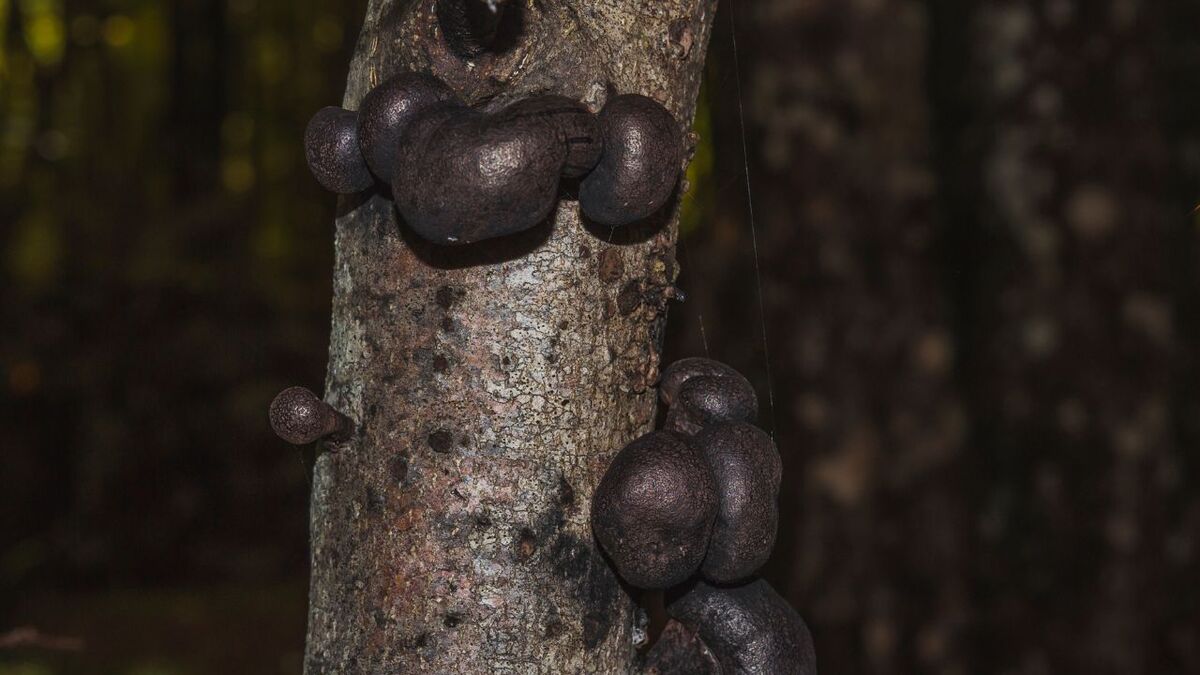
The Circle of Life
My conclusion? The coal fungus is a stunning tool for bushcrafters and nature lovers.
While it does require some preparation and practice, it rewards you with reliability and a deep sense of connection with nature.
Remember: Every coal fungus you collect plays a role in the bigger picture.
By collecting responsibly, you contribute to preserving this fascinating ecosystem.
Insider tip: The tiny spores are excellent for ink production. The micron size of the spores is absolutely tiny, resulting in an incredibly fine and easy-to-use black ink.
And who knows? Maybe this knowledge will inspire you to see your next forest walk with completely different eyes. You are not just a visitor - you are part of this living, breathing system. Amazing, isn't it?

Sources for the guide
https://www.zobodat.at/pdf/Mykolog-Mitt-Blatt_5_0077.pdf
https://totallywilduk.co.uk/2022/01/06/king-alfred-cakes-daldinia-concentrica/

Author of the guide
Martin Gebhardt
Hey, I'm Martin. On my blog, you will learn the basics and numerous details about living in the wild. I think survival, bushcraft and the good life in nature are the keys to happiness. Find me here on Instagram or on YouTube. You can find more about my mission on the About Me page.
Was this guide helpful?
26 people found this guide helpful.
5.00 out of 5 points (26 Ratings)
Comments (0)
This post may contain affiliate links. So if you click on the links and make a purchase, I will receive a small commission at no additional cost to you. Click here, to learn more about it.


